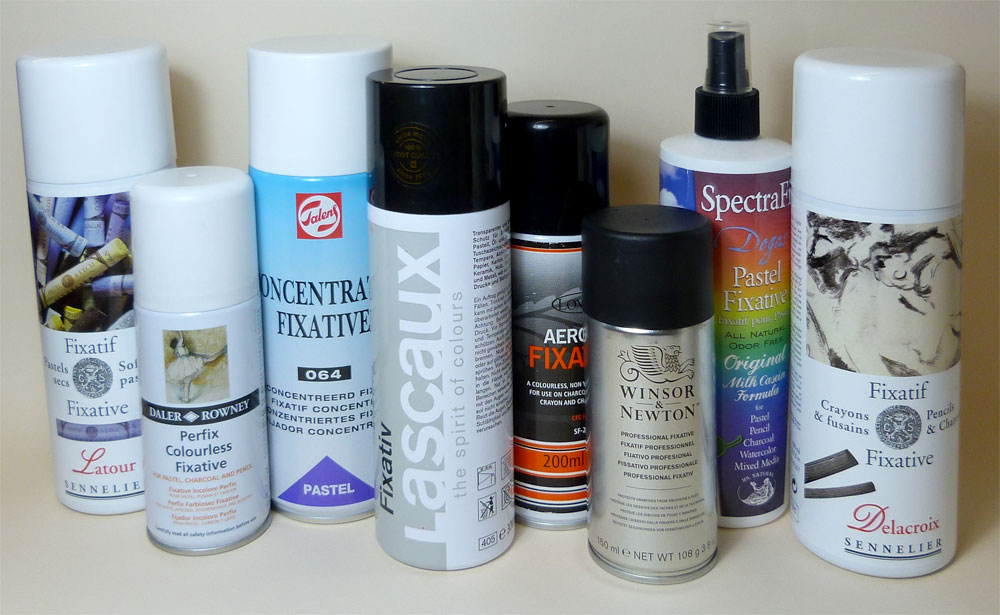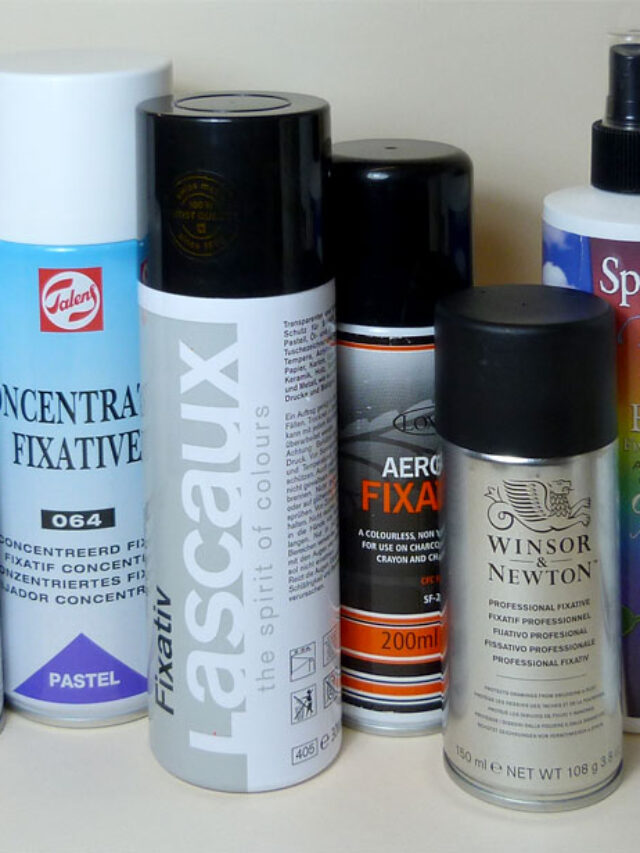Have you ever looked at the Mona Lisa and wondered how they can preserve a painting made in 1503, which still enthrals the audiences? Sure, they are encased in glass, so that they may be saved from unwarranted soup attacks. One of the most popular ways, which is often the last step to bring an artistic vision to life, is a fixative spray. Fixative sprays must not be confused with fixation sprays. Even though they serve the same purpose, the former is used specifically for artwork while the latter is used as a cosmetic.
Art Fixative Spray
A spray fixative is occasionally used for dust-based mediums (pastels, charcoal, chalk) to prevent smearing, smudging, crumbling, fading, and discolouring. The preserving formula in fixative sprays is typically an aerosol which imparts longevity to any drawing or painting. Seldom, they contain UV filters making your painting colors lightfast. It essentially refers to the fact that if you are using a fixative spray for pastels, the shades will be impervious to fading and retain their original colours for an extended time. An advantage of using fixative sprays is that you may still draw on top of the fixative spray. The only catch — it cannot be rubbed off.
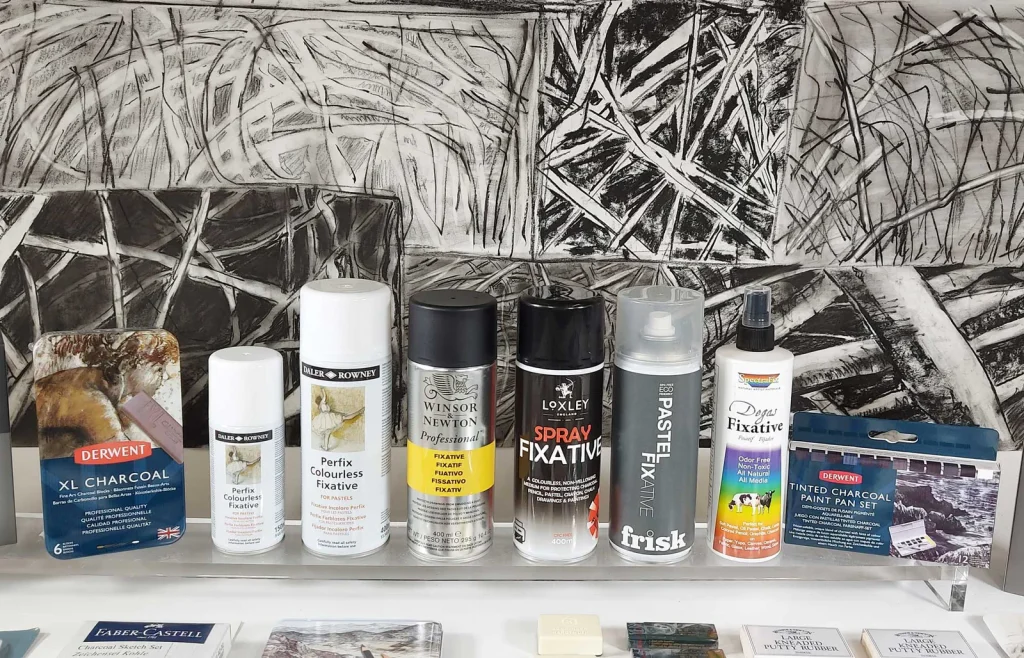
What are Fixative Sprays Made Of?
Even though they weren’t technically sprays, diluted egg whites were used in primordial times to protect artworks. But soon, synthetic sprays became popular due to their efficiency. A typical fixative spray for drawing may be made of casein, glue, or synthetic resin. However, some draughtspersons (mostly Australian aboriginals) use gum gathered from the bloodwood trees. At present, you may find fixative spray for art designed for charcoal, pastels, pencil drawings, and even digital prints. Some fixatives may have a matte finish, while others may have a glossy or satin finish.
How does a Fixative Spray Work?
When applied, fixative spray creates a transparent and protective layer over the surface of the artwork, effectively sealing the materials in place. This prevents the pigments or media from rubbing off or being disturbed by moisture or other environmental factors. There are two types of fixative sprays – final fixative sprays; used in the final stage of painting to secure the colour and protect them from humidity and dust and workable fixative sprays; used when you are making a multi-layered artwork and need to increase the absorbance of the canvas.
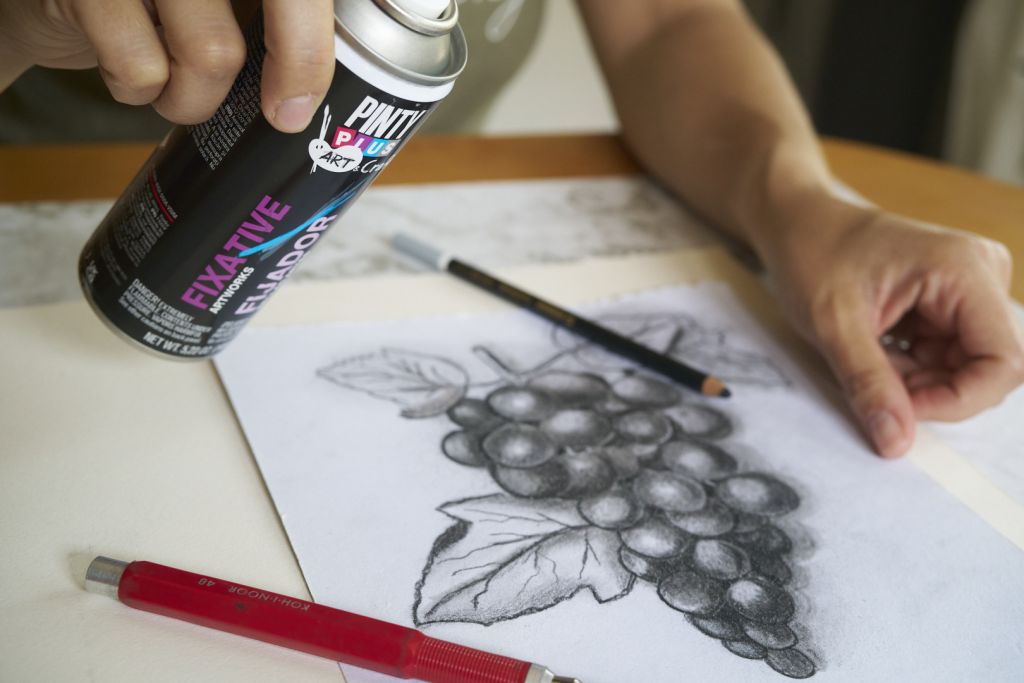
Whenever you use a fixative spray for pencil drawings or charcoal paintings, you must ensure that the area is well-ventilated as their chemical composition might hinder your health. It is advisable to follow the manufacturer’s instructions for proper application and drying times.
How To Use Fixative Sprays
Using fixative sprays is quite easy. A fixative spray is used exactly the way one would use spray paints. At a distance of about 20 to 30 cm, start spraying pastel fixative spray on your pastel drawing crosswise and evenly. Start with a light layer and apply another coat if need be, albeit between a time gap of at least 10 minutes. Multiple applications of the fixative spray will make your painting darker. Before you even begin spraying, try doing so with a test sample. This is because fixative spray for pencils may not work the same way as charcoal fixative spray.
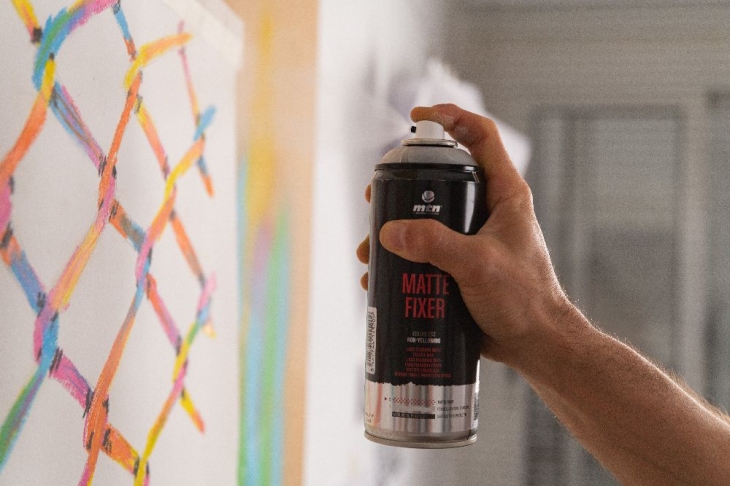
Fixative sprays are made for dry mediums only. If there is even a faint trace of ball pens, felt-tip pens, or markers, they will thin out and bleed onto your painting when it comes in contact with the spray. If you are using a waterproof fixative spray on an uneven surface, say, use it from various directions to ensure that every part of your painting is coated. Since acrylic and oil paintings are water and abrasion-resistant, using fixative sprays on them is pointless, although you may do so.
Buying Fixative Sprays
Fixative sprays are a must in a painter’s kit. You may buy various brands — Winsor Newton fixative spray, Spectrafix spray fixative, or Camel fixative spray from your local art supply shop or even online. However, there are some factors that you must consider while buying a fixative spray that serves your purpose. Those are mentioned below.
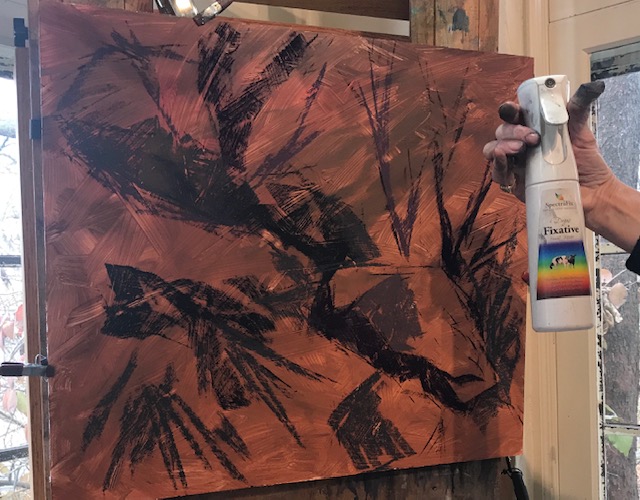
- Their strength of fixation. Also remember, that a watercolor fixative spray is not the same as fixative spray charcoal. They will never bear the same results.
- Their UV resistance level.
- Their color. Even though most fixative sprays are colourless, some aren’t. If you are using a fixative spray for charcoal drawing which carries a light tint, it will undoubtedly change the colour of your creation.
- Their smell. Since most readily available fixative sprays are made of synthetic materials, they carry a strong smell. Hence, only use them if you aren’t opposed and allergic to their odour.
Image Courtesy – Jackson’s Art Supplies

